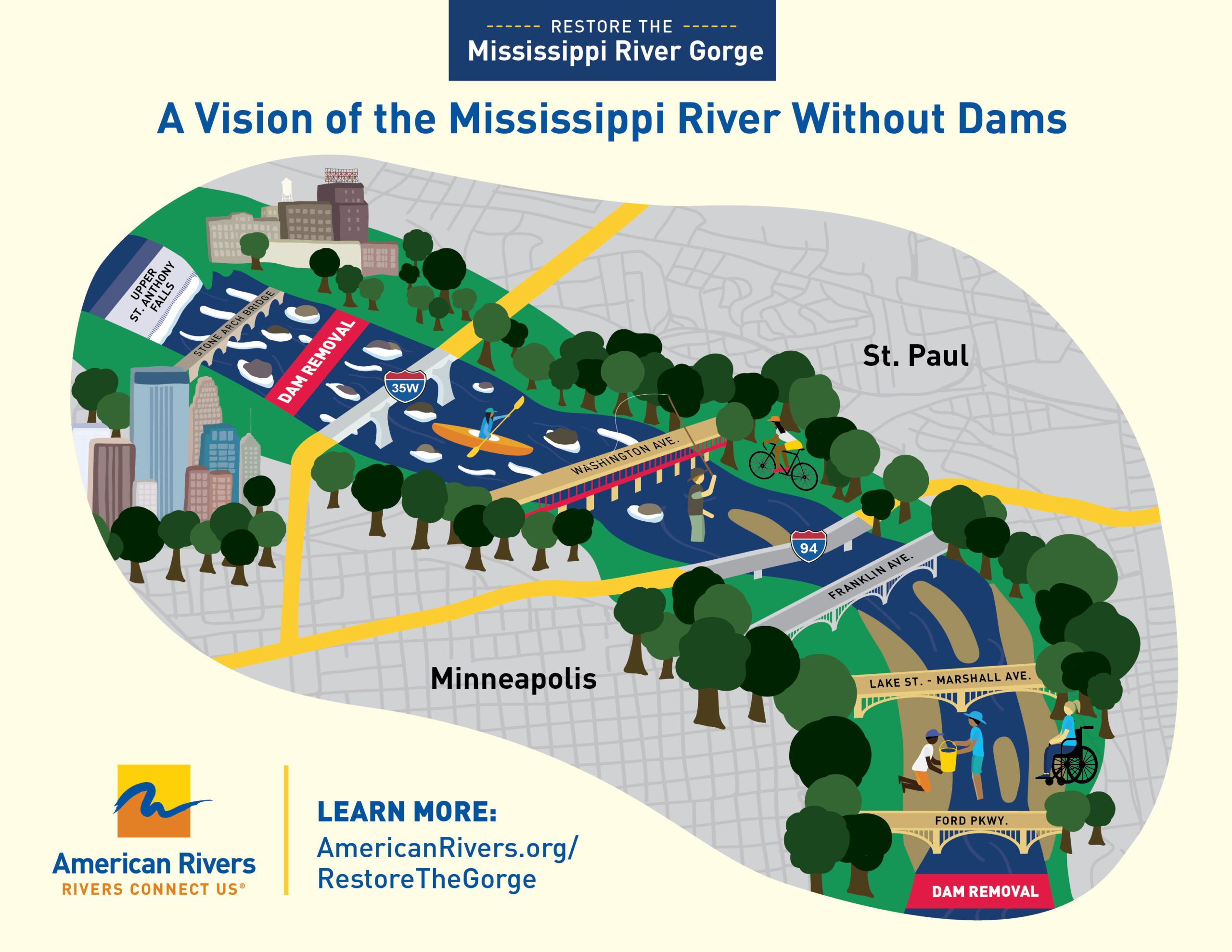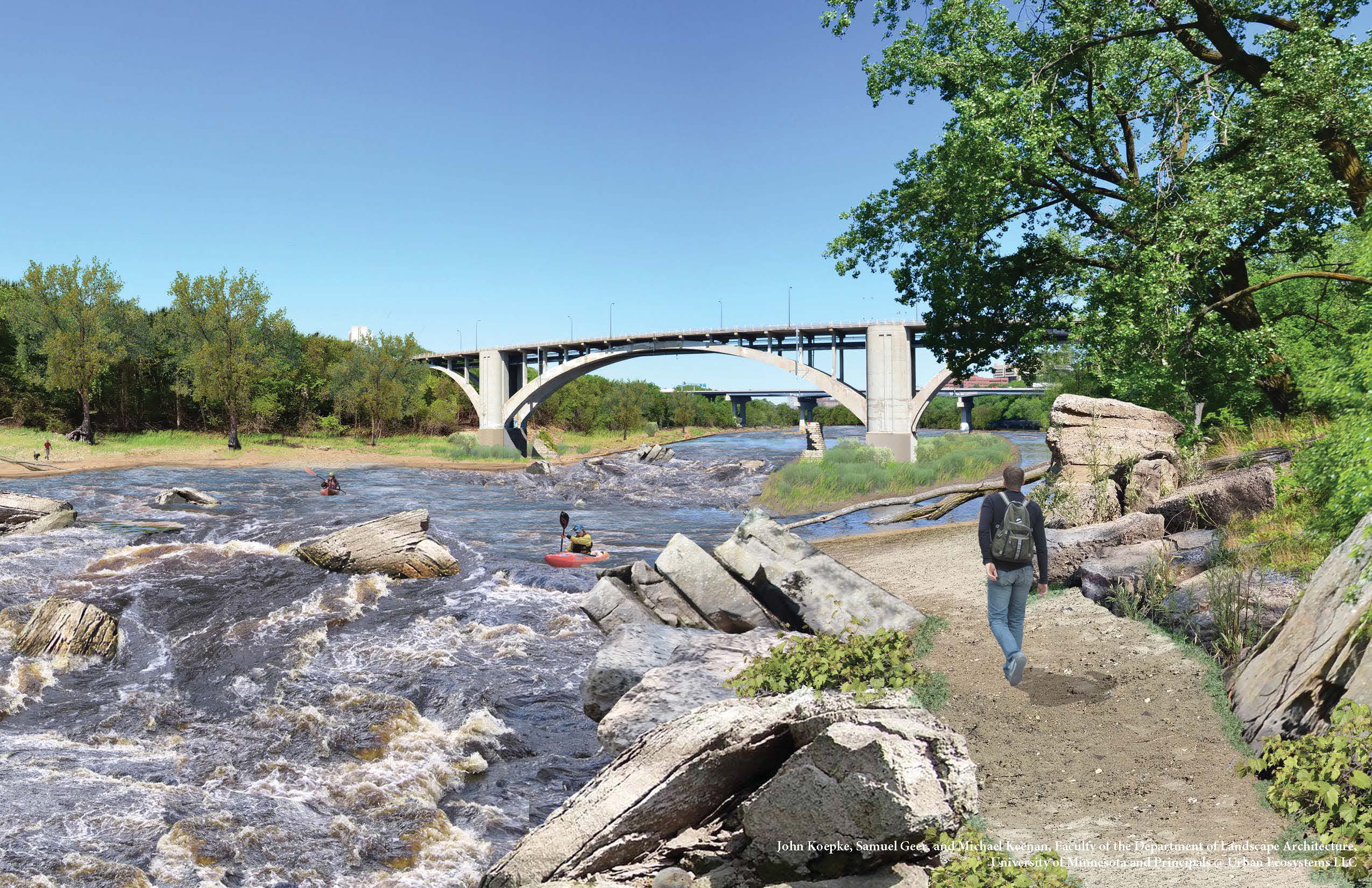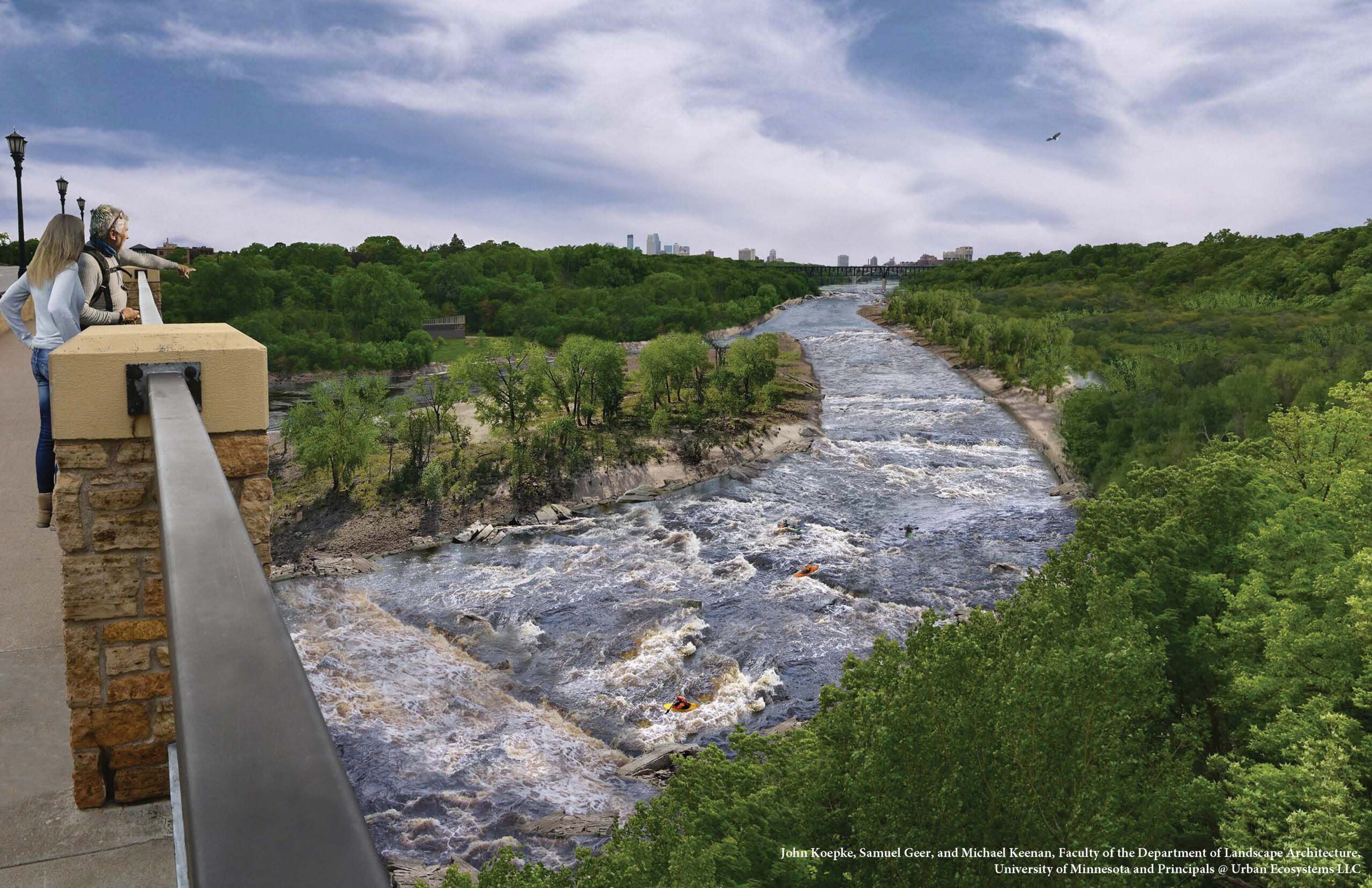RESTORE THE GORGE
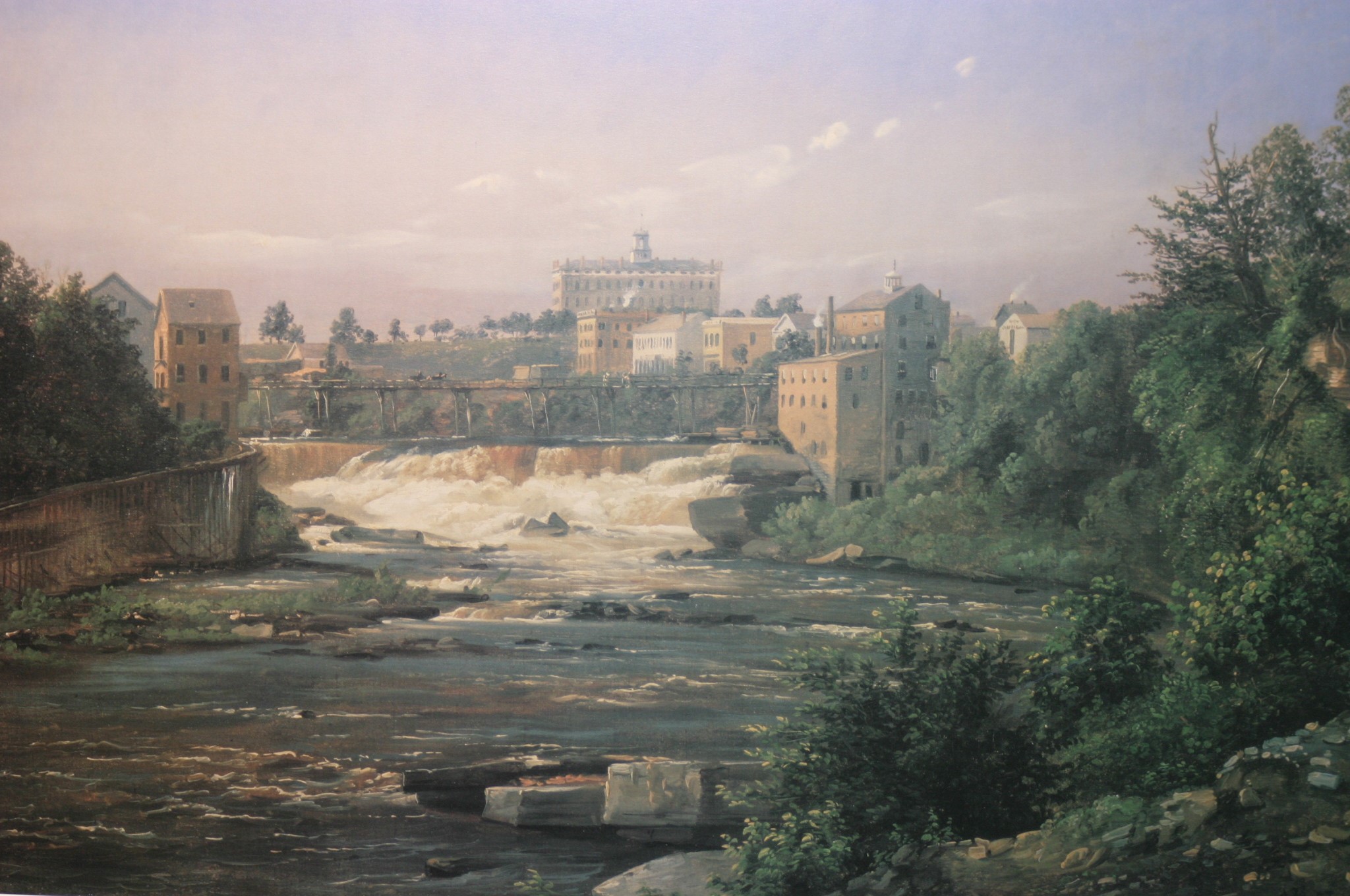
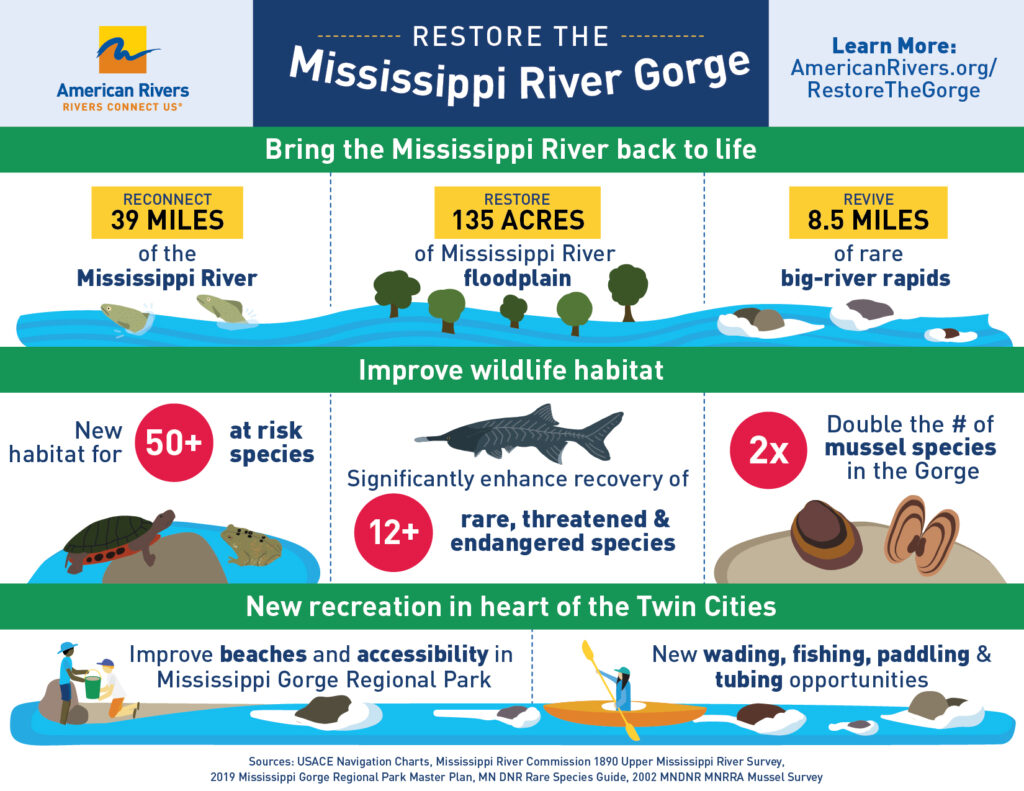
Story of the Great Severed Rock
Almost 500 river miles downstream from its source at Lake Itasca, Minnesota, the Mississippi River tumbles over its only waterfall. Formed by glaciers more than 10,000 years ago, the magnificent waterfall was once over 200 feet high and located in what is now downtown St. Paul. Over the millennia, the falls migrated upstream to its present location in downtown Minneapolis, leaving nearly 10 miles of broken limestone in its path.
Today, we know it as the Falls of St. Anthony and the limestone gorge as the Mississippi River Gorge — or Haha Tanka (“river of the waterfall”) in Dakota and gichi-gakaabikaa (“great severed rock”) in Anishinaabe (Ojibwa). The Minnesota and Mississippi River confluence area, including the Gorge, was sacred to the Dakota, who called the area “bdote.” The confluence of the Haha Tanka and Mnisota Wakpa (Minnesota River) is the center of the earth and where the Dakota people began, according to the origin stories of the Bdewakantunwan Dakota.
Today, the defining feature of the Mississippi River Gorge, the rapids downstream of the waterfall, are drowned by two dams.
The Problem: Loss of Big River Rapids
The Mississippi River, one of the most iconic, important waterways in the world, is also one of the most altered. Dams drown once-vibrant rapids, levees stop the river’s meander, and dredging and river-training structures keep the Mississippi locked into a prescribed path.
Starting in the early 1900s, locks and dams were built below the Falls of St. Anthony in the heart of the Twin Cities to provide hydropower and navigation. When the rapids drowned, dozens of species of mussel, fish, birds, reptiles and other wildlife suffered.
The dams no longer serve their navigation purpose and hydropower production is significantly below capacity. Yet their ecosystem impacts are far less benign: Habitat in the upper half of the Mississippi River is degrading at a rate of up to 4 percent annually – primarily due to the locks and dams.
It doesn’t have to be this way.
In the Twin Cities, restoring the Mississippi River Gorge would create habitat for over 50 rare, threatened and endangered species. Of those, over a dozen species recovery outlooks would significantly improve if the Mississippi River Gorge Rapids were restored.
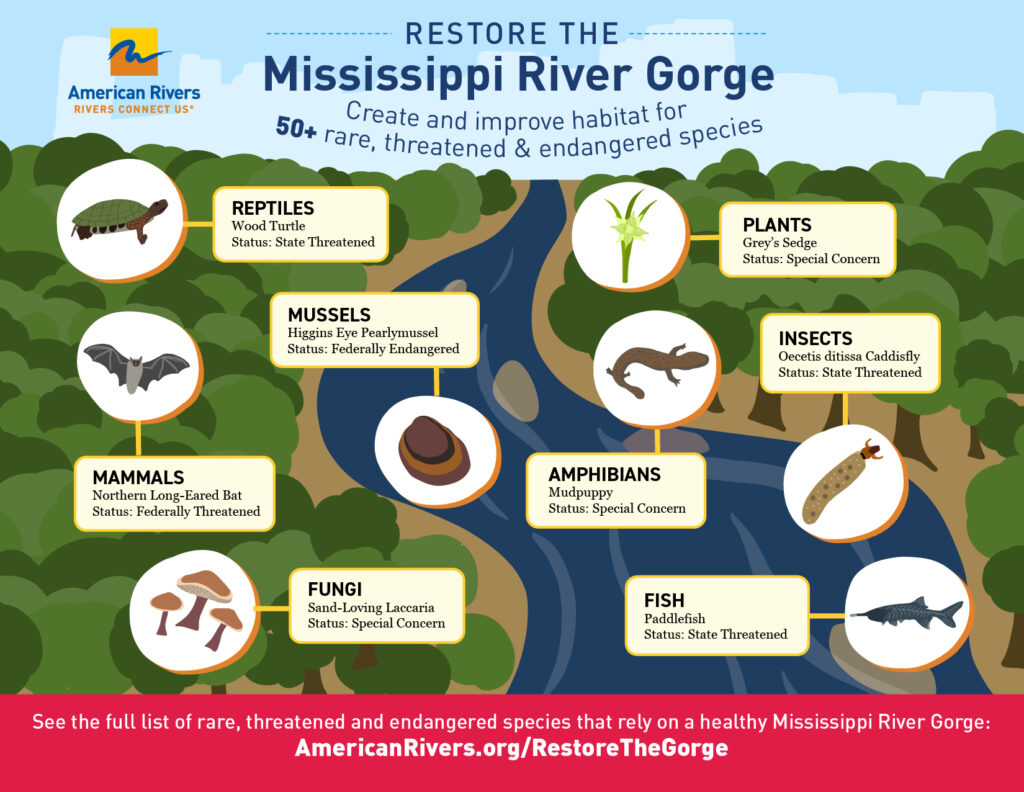
We have better solutions than dams to meet our energy needs. It isn’t worth sacrificing the Mississippi River ecosystem.
As the Earth faces a biodiversity crisis, it is time to remove the dams, restore the Mississippi River Gorge and ensure our native Minnesota species don’t disappear for good.
The Opportunity: Restore the Mississippi River Gorge
The reach of river eligible for restoration lies in the heart of Minneapolis-St. Paul, entirely within the Mississippi Gorge Regional Park, which sees over 2.7 million visits annually. Most visitors use the park’s bike and foot trails. Water access and recreational opportunities are extremely limited primarily to rowing club members and power boaters.
The Corps will launch a disposition study soon to evaluate the potential benefits of removing the dams and restoring the Mississippi River rapids through Minneapolis-St. Paul. We have a once-in-a-generation opportunity to consider removing the dams and restoring this critical Mississippi River habitat. Now is our moment!
Check out what our partners are saying
Friends of the Mississippi River
National Parks Conservation Association
What will the Gorge look like without the dams?
